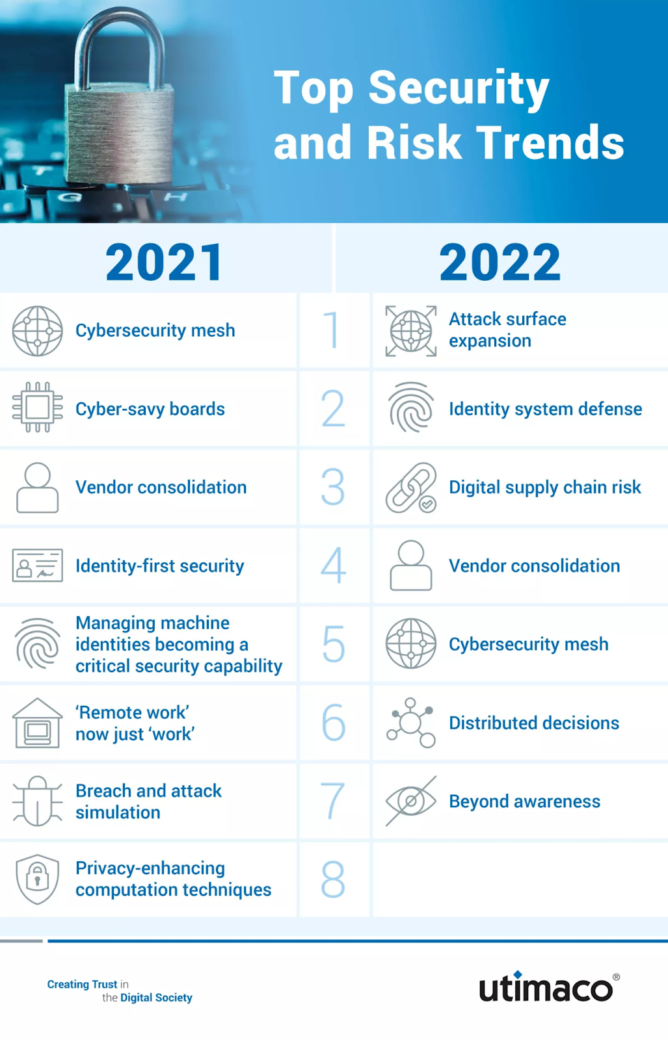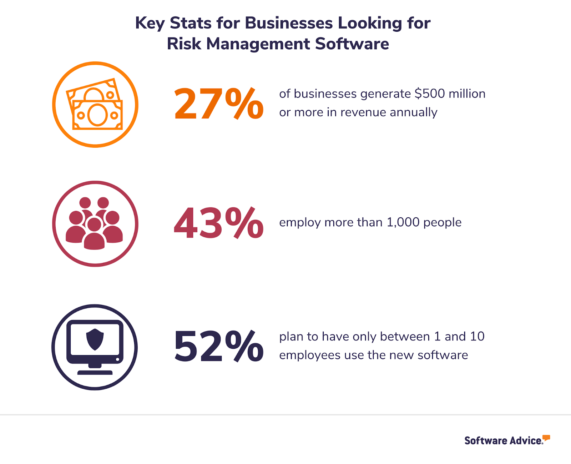Introduction to risk management in software project management
How can risks affect your software development projects? Are there any effective strategies to avoid the most common of them? What should be the characteristics of risk management in 2023? We will try to answer those questions and more in today’s article and shed some more light on this topic. Are you ready? Let’s go!
We live in an age when software development is a big part of seemingly any industry in some shape or form. Organizations use websites, mobile apps, CRMs, and many other software solutions in order to reach their business goals, improve internal and external operations and ultimately increase their revenues.
There are ready-made solutions that can cover your basic needs, however, if in your case customization is required, you will have to be aware of the basics of software development and risk management in software engineering at least at the high level.
Grand View Research claims that the size of the software development market is getting close to the USD 500 billion mark, and it is expected to reach USD 525.1 million by 2030. The market is truly enormous, with 26.9 million software developers available worldwide.
While the technological advancements and growth of the market will allow you to build almost everything you want, if you have an appropriate budget, of course, there are still no guarantees that a software product for your organization will end up being successful, or being built at all.
1 in 5 startups fails in the first year of existence, and half of the startups fail within 5 years. Of course, the reasons for that can be very different, however, by being aware and adhering to the process of risk management in software engineering, you can improve your chances for success.
In this article, we will share our expertise and experience in risk management in software development, and you will be able to use these tips in any kind of industry, from Healthcare to E-learning development.
“The essence of risk management lies in maximizing the areas where we have some control over the outcome while minimizing the areas where we have absolutely no control over the outcome.”
— Peter L. Bernstein
What is the risk management process in software engineering?
To put it simply, this process consists of identifying, assessing, mitigating, and controlling any possible, existing, or potential threats that might harm your business. Types of risk management in software engineering can be divided into internal and external.
An example of the risk involved in software development that can be considered external may come from the possible hurricane, while internal comes from people or processes inside your organization, like failing to meet a deadline on an important task.
The project manager is widely regarded to be responsible for risk management, however, the responsibility for this should be shared among all members of your software development process. On a high level, even the stakeholders should know what is considered and not considered as a risk in project management.

Key steps of risk management in software engineering
Before diving deep into the types of risks in risk management, let’s review the stages it consists of.
| Identification | You, or a qualified member of your team, should take over identifying possible threats |
| Evaluation | The next step is to determine how serious the uncovered threats are and how they can impact your business |
| Prioritization | At this step, you should decide in what order to deal with the risks you have at the moment |
| Management | Now you can actually take action and mitigate risks by using available resources where they needed the most |
Risk management involves which type of risk: A list of the most common threats
You can look at risk analysis in project management from different perspectives because possible threats may come from both technical and business perspectives, and you should be ready for them.
The lack of planning and understanding
With this problem, you might end up exceeding the previously planned budget and not meeting set timelines. In order to avoid it, you should put everyone on the same page, including executives.
It is extremely important, that the product owner or a project manager will do the best they can to create a roadmap for the project, plan the scope, and conduct proper research and analysis for the project.
The lack of management support
Speaking of executives, there is another threat that can negatively impact the development process. Let’s say the management provided you with permission to start working on a product, but then the plans change, and you will get the budget cut or an entire project canceled. How to avoid this unfortunate situation? You need to make sure that businesses understand the significance of a particular software development project and what business goals it set to achieve.
Problems with communication
When you got your executives on board with your ideas, you may encounter another common problem. Your development teams may fail to understand the determined business goals and not feel motivated to do the job. Make sure to do everything you can to transfer that vision, including creating user stories and telling every small business detail that might matter while creating a product.
Too high expectations
This one also may lead to budget cuts and project cancelation. You can solve this by putting additional effort into planning and making sure that everyone understands what you are trying to achieve with the solution.
Not enough time for Research and Prototyping
This is an area where you can fall into the trap of doing too much or not enough. While you are building a product you need to have enough time for proper research, however, it requires valuable time that you often just don’t have. What to do here? It makes sense to get a consultation from experienced software developers for the right decision.
Scope creep problem
It is important to leave some room for changes in the scope of your project while you are planning. If you take into consideration only current needs, you may end up exceeding the budget or timelines when something will change, and you will have to take an unplanned path. More often than not, plans change, so avoid scope creep!
Inaccurate estimations
The root cause of this is poor planning. When you make estimations, you need to rely on facts and make informed decisions. Your management and actual developers should be connected on the subject of estimation, and help each other in the process of setting budget boundaries and realistic release dates.
Legacy systems
Existing infrastructure is another important factor that should be taken into account. You can develop the most innovative and effective software in time, but fail to plan that the replacement or integration with an existing system may eat up a significant chunk of money and time. If you use outsourcing, your development teams should be fully aware of what systems you currently have, and how much effort the integration of the new solution will take.
Setting a timeline
With all the abovementioned areas covered, it may be up to you to set up a proper deadline. Obviously, if external factors allow you to do that. It is very important to strike a balance here, in order to obtain great results.
If you push too hard with a deadline, the development team could simply fail to deliver the product as promised. However, if you provide too much time you may encounter a lack of motivation problems, which will result in a relaxed attitude among the development experts.
Once again, experienced IT providers may help you to set realistic milestones according to your specific situation.
Exceeding the budget
The most accurate calculation and detailed planning still don’t give you a 100% guarantee. More often than not, your project will require more money than initially planned. All you can do here is to keep in touch with the stakeholders and control that any changes to the development direction will go through a proper protocol and get additional financing if needed.
Not enough testing
Even the greatest product may fail due to the lack of testing. Bugs and not properly functioning features of your software solution may ruin everything. Right from the very start, it makes sense to add to your budget expenses for proper testing. Both Manual QA Engineers and QA Automation Engineers are important in the quality assurance process and delivering software adhering to the highest industry standards.
Not leveraging user feedback
Make sure to be able to make changes and adjustments in your product based on user feedback upon the release. No matter how big your project is, whether it is an MVP or a complete product, being flexible after release is super important to receive maximum value. It will be a good idea to have a significant amount of money and time planned beforehand, that you will spend on making changes based on user feedback post-launch. In some cases, this can make your break your product, so you need to pay enough attention to it.
FAQ
What is a risk in software development?
You can consider a risk any factor that can potentially impact the software development process negatively. To deal with this, risk management is created, a discipline that focuses on preventing unfortunate situations while creating a product. Usually, the project manager is responsible for this, and there are risk management MCQs to test the skills of the particular expert.
What are examples of software development risks?
First, we need to distinguish that there are two categories of potential threats. First, come from the business side, and second from actual technical implementation. Business risk example can be poor planning, while technical risk can be the usage of unsuitable technology.
What are technical risks?
Technical threats can stop the progress of the development process. These may include poor code quality or a lack of testing.

